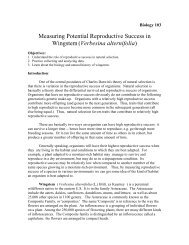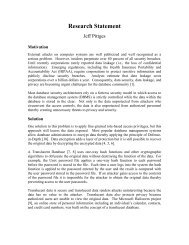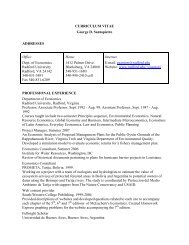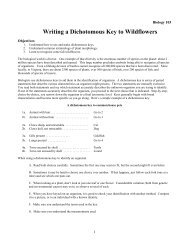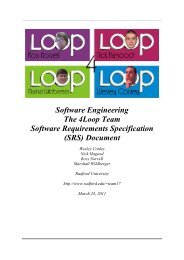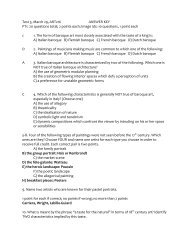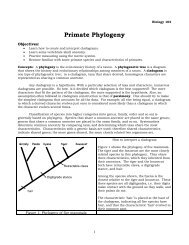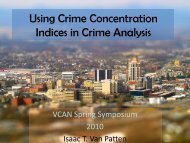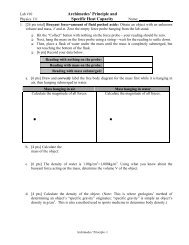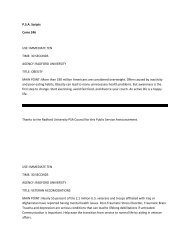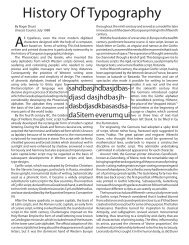Lab Manual - Radford University
Lab Manual - Radford University
Lab Manual - Radford University
Create successful ePaper yourself
Turn your PDF publications into a flip-book with our unique Google optimized e-Paper software.
CHAPTER A. LABORATORY EXPERIMENTS 3<br />
Name: Section: Date:<br />
A.1 Celestial Coordinates<br />
I. Introduction<br />
How do you pinpoint the position of your house on the Earth? You can specify the street address or give<br />
a pair of coordinates. You can divide the surface of the Earth into grids in the east-west direction and the<br />
north-south direction. By measuring coordinates (i.e., distances or angles) from some reference points, you<br />
can determine the exact position of your house. For example, the City of <strong>Radford</strong> is located at a longitude<br />
of 80.6 ◦ west and a latitude of 37.1 ◦ north. In this case the reference points are the meridian through<br />
Greenwich, England, the reference point for longitude, and the equator, the reference point for latitude. In<br />
astronomy we are interested in specifying the positions of objects in the sky as seen by an observer on the<br />
Earth. It is accomplished by giving a pair of coordinates in a similar manner as determining locations on<br />
the Earth.<br />
It helps to picture the night sky as an immense glass sphere with the Earth (and the observer) at its<br />
center and all of the stars and planets projected on the sphere (see Fig. A.1). This sphere is known as the<br />
celestial sphere.<br />
★<br />
★<br />
★<br />
★<br />
★<br />
★<br />
★<br />
★ ★<br />
★<br />
Observer<br />
★<br />
★<br />
Horizon<br />
Figure A.1: The observable half of the celestial sphere above the horizon.<br />
There are various ways to define coordinates on the celestial sphere. In this lab we are going to study<br />
two such systems: the alt-azimuth system and the equatorial system.<br />
II. Reference<br />
• The Cosmic Perspective, Supplement 1, pp. 94 – 104.<br />
III. Materials Used<br />
• planetarium<br />
• Starry Night Backyard



